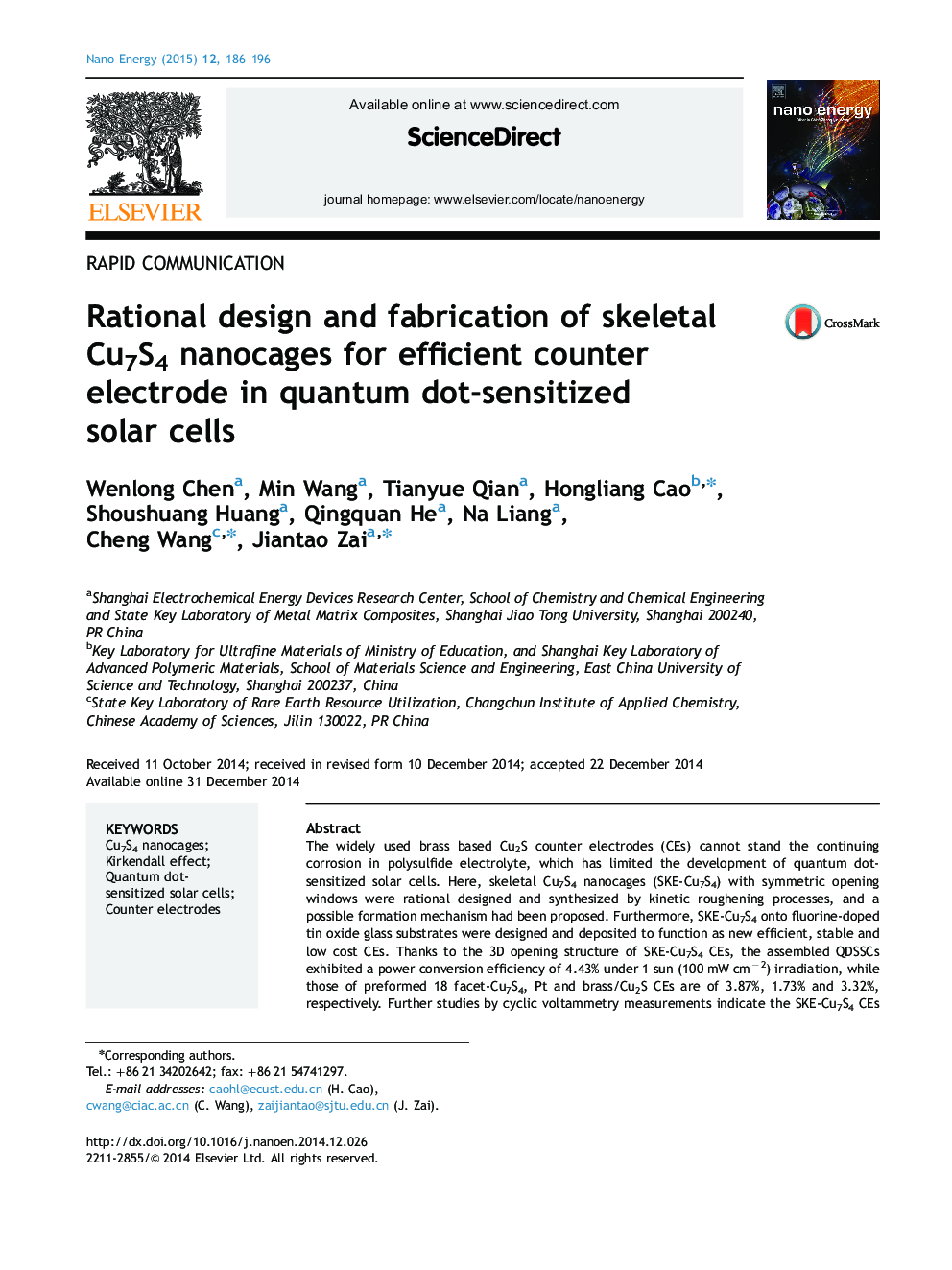| Article ID | Journal | Published Year | Pages | File Type |
|---|---|---|---|---|
| 1557237 | Nano Energy | 2015 | 11 Pages |
•Skeletal Cu7S4 nanocages with symmetric open windows were synthesized by a kinetic roughening process.•The opening hollow structure can facilitate the diffusion of electrolyte and lead to a PCE of 4.43%.•The SKE-Cu7S4 CEs showed super long-term stable capability towards polysulfide electrolyte.
The widely used brass based Cu2S counter electrodes (CEs) cannot stand the continuing corrosion in polysulfide electrolyte, which has limited the development of quantum dot-sensitized solar cells. Here, skeletal Cu7S4 nanocages (SKE-Cu7S4) with symmetric opening windows were rational designed and synthesized by kinetic roughening processes, and a possible formation mechanism had been proposed. Furthermore, SKE-Cu7S4 onto fluorine-doped tin oxide glass substrates were designed and deposited to function as new efficient, stable and low cost CEs. Thanks to the 3D opening structure of SKE-Cu7S4 CEs, the assembled QDSSCs exhibited a power conversion efficiency of 4.43% under 1 sun (100 mW cm−2) irradiation, while those of preformed 18 facet-Cu7S4, Pt and brass/Cu2S CEs are of 3.87%, 1.73% and 3.32%, respectively. Further studies by cyclic voltammetry measurements indicate the SKE-Cu7S4 CEs still remain good cyclability after 600 cycles, demonstrating a super stable capability, while the commonly used brass/Cu2S CEs show obvious fluctuation.
Graphical abstractFigure optionsDownload full-size imageDownload as PowerPoint slide
